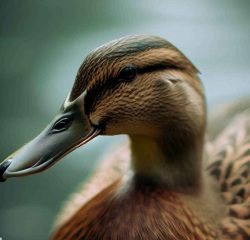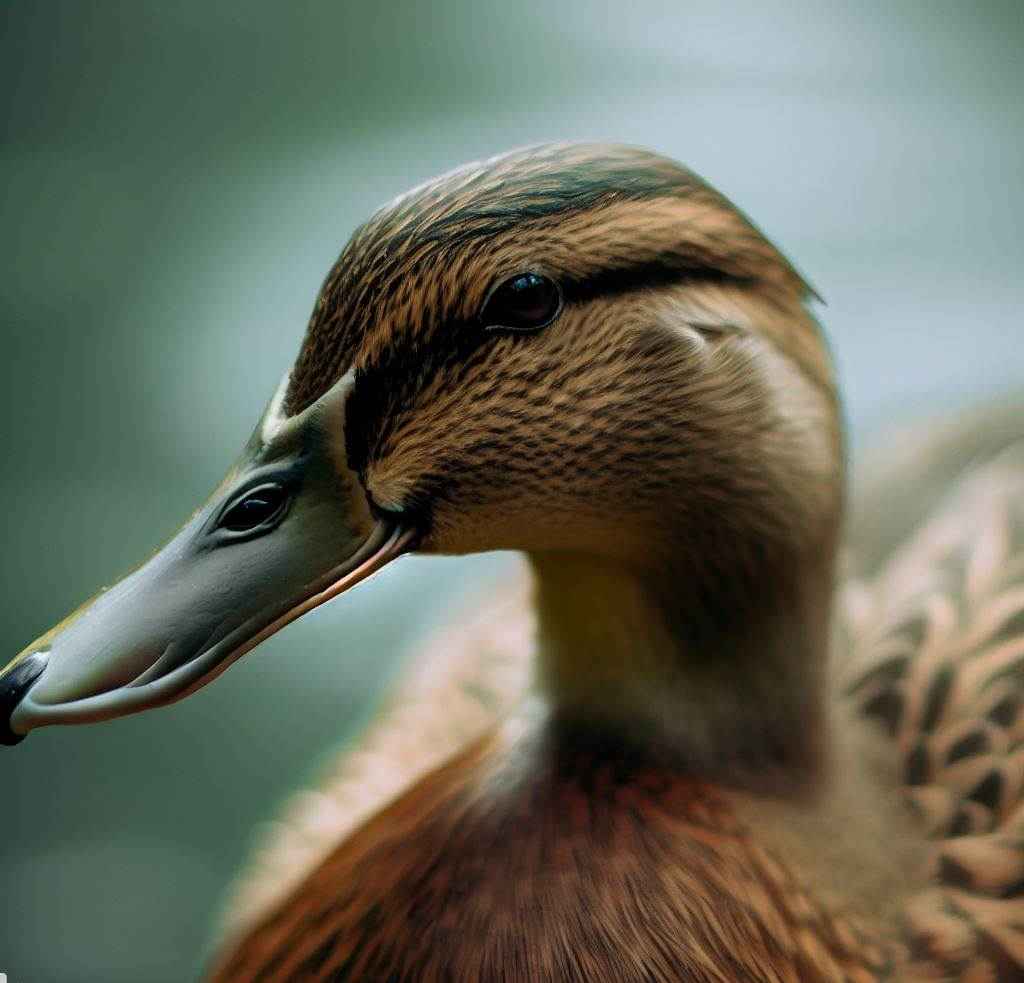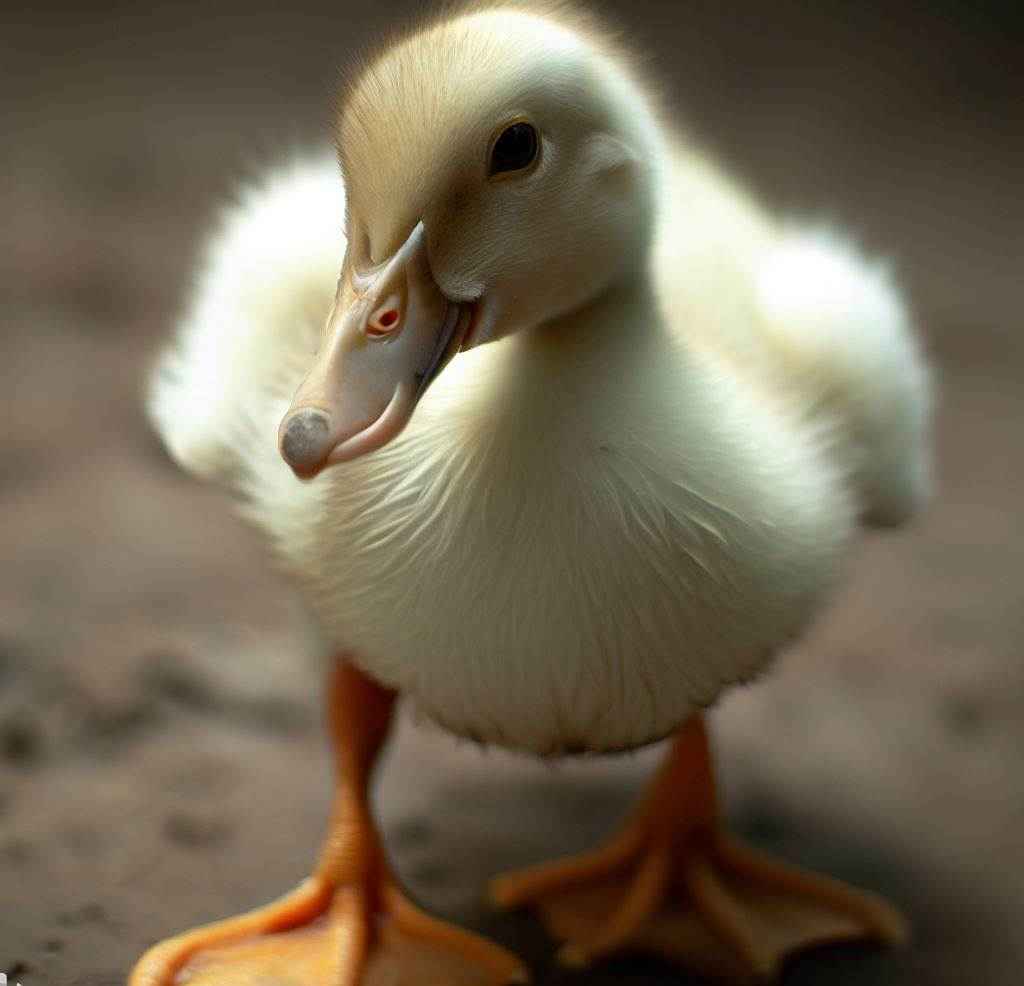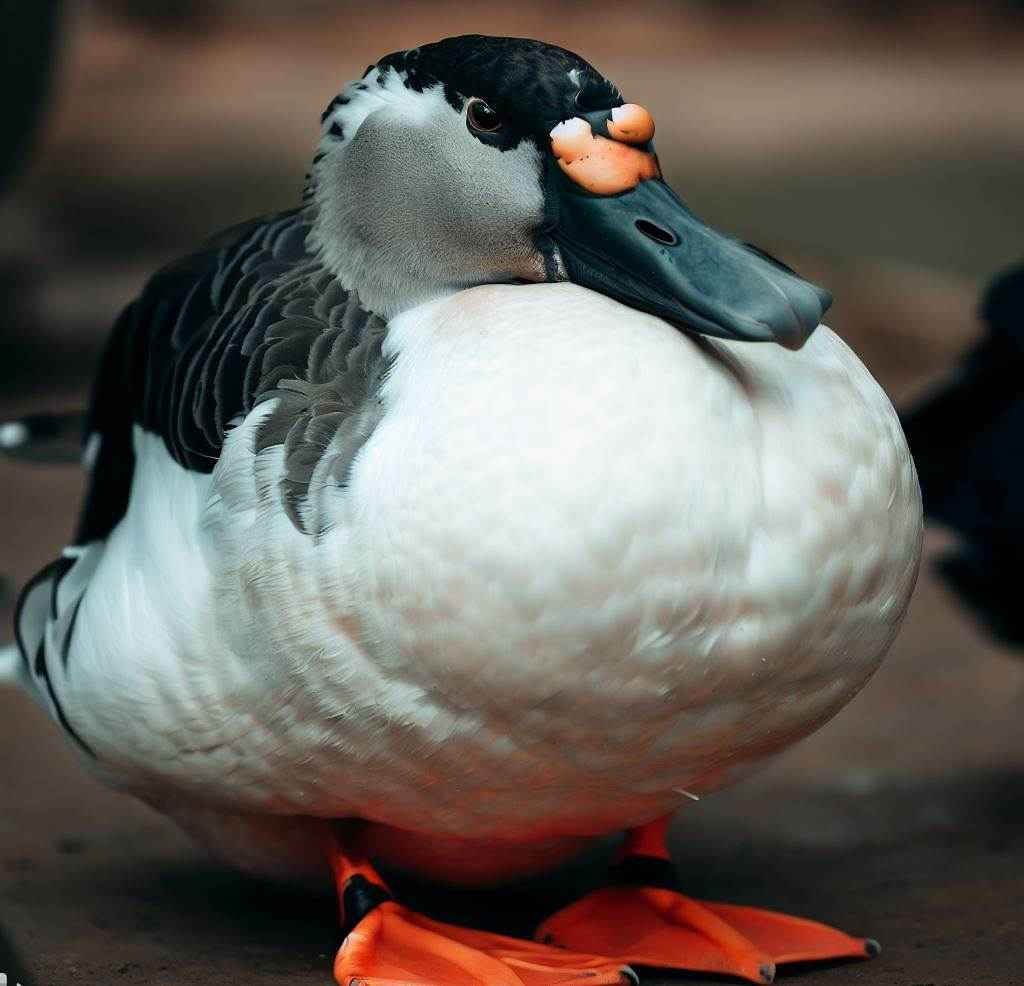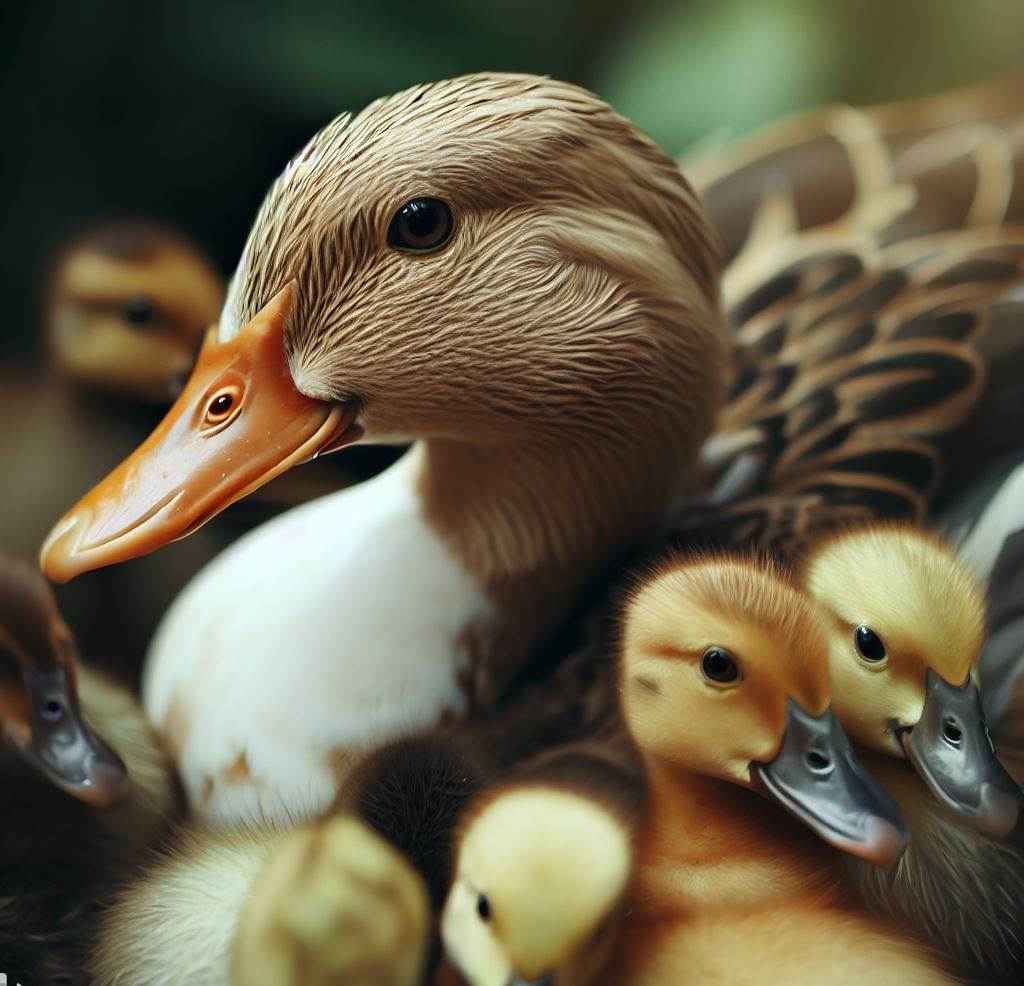What Are Ducks Feet Called?
Answer to the question What Are Ducks Feet Called? Commonly Ducks are known as waterfowl because they ducks possess unique feet which are adapted perfectly for their semi aquatic lifestyle. The technical term for ducks’ feet is “palmate feet.” Their feet name originates from the Latin word “palmatus” meaning “webbed” which precisely describes their distinguishing feature the webbing between their toes. Ducks have this webbing which involves significantly to their swimming abilities.
The palmate feet of ducks are specially designed for propelling them through the water with minimal resistance. The webbing, a membrane of skin between their toes, expands when they push their feet against the water, effectively creating a paddle-like shape. This design allows them to move through the water effortlessly, making them agile swimmers and divers. Moreover, ducks have evolved to have a unique arrangement of their toes. Most ducks have four toes, with three pointing forward and one pointing backward. This structure provides them with stability when walking on land and enhances their swimming efficiency.
The backward pointing toe is also known as the “hallux,” is essential for providing balance and steering while swimming. The webbed feet also come in various shapes and sizes, depending on the duck’s habitat and behavior. For example, dabbling ducks, which feed mainly on the water’s surface, have broader and more shallowly-webbed feet. On the other hand, diving ducks, which submerge underwater for food, possess narrower and more deeply-webbed feet, enabling them to move more efficiently in the water.
Introduction:
Let us quack our way into understanding what are ducks feet called and why they are so remarkable! Ducks, those charming and versatile waterfowl, are known for their webbed feet that enable them to gracefully navigate various aquatic environments. These remarkable feet serve a crucial role in their survival and daily activities. In this article, we will dive into the fascinating world of ducks’ feet and explore the anatomy that makes them exceptional swimmers.
What Are Ducks Feet Made Of?
compared to chicken feet which are mainly rounded the duck feet are bigger, webbed for water movement and wrapped by cartilage. Duck feet are a special kind of bone and cartilage that have a special twist that gives them flexibility.
Because they are not fused, ducks may paddle through water and walk on land with them. Like their natural swim fins, ducks also have a webbed structure between their toes that functions as an extension comparable to a paddle. Ducks use this ingenious architecture to swim more efficiently because they push water away with each stroke. Like reptiles, duck feet also contain scales that act as a protective coating and decrease wear in water. Ducks can go from land to water with ease because their feet are an active combination of bones, cartilage, webbing and scales.
For What Ducks Feet Are Useable?
Their feet are highly versatile and serve several essential purposes that aid their survival and daily activities. The most prominent and crucial use of their feet is for swimming. Ducks are exceptional swimmers, and their feet play a central role in propelling them through the water. The webbing between their toes allows them to create paddle-like structures, minimizing resistance and making swimming more efficient.
This unique adaptation enables them to navigate various aquatic environments with ease. Furthermore, ducks’ feet are essential for foraging and feeding. Whether they are dabbling on the water’s surface or diving beneath it, their feet help them find food and grasp aquatic plants, insects, and small fish. The backward-pointing toe, or the hallux, acts as a pivot point, allowing them to maintain balance and stability while foraging in the water. On land, ducks’ feet are not just for walking.
They also aid in various terrestrial activities, such as building nests and courting rituals. The webbing, though less pronounced than when swimming, still provides some advantages for moving across muddy or marshy terrain. In summary, ducks’ feet are incredibly useable and multifunctional. They are perfectly adapted for swimming, foraging, and navigating diverse environments, making them the remarkable waterfowl we admire and cherish. Another question is Do bald eagle eat ducks? visit the post if you want to know about it.
For Which Purpose Ducks Use Their Feet?
Ducks utilize their feet for a multitude of essential purposes that are vital to their survival and daily lives. The primary and most prominent purpose of their feet is for swimming. Ducks are excellent swimmers, and their feet play a crucial role in this aquatic prowess. The webbing between their toes allows them to create efficient paddles, reducing water resistance and enabling them to gracefully glide through lakes, ponds, and marshes.
Apart from swimming, ducks’ feet are also indispensable for foraging and feeding. Whether they are dabbling on the water’s surface or diving beneath it, their feet help them find food and grasp aquatic plants, insects, and small fish. The backward-pointing toe, known as the hallux, acts as a pivot point, providing stability and control while they search for nourishment. Ducks’ feet are not solely designed for water-related activities. On land, their feet play a significant role in walking, running, and even courtship displays.
While the webbing is less pronounced on land, it still aids in traversing muddy or marshy terrains. Additionally, ducks’ feet contribute to thermoregulation. As waterfowl, they often swim in cold waters, and the blood vessels in their feet help regulate body temperature by directing warm blood to their feet and cooling it down before it returns to the body. Ducks’ feet are remarkably versatile and essential for swimming, foraging, walking, courtship, and thermoregulation. Their unique and specialized anatomy showcases the marvel of adaptation to their semi-aquatic lifestyle.
Reason Why Ducks Have Webbed Feet?
Ducks have webbed feet as a remarkable adaptation to their semi-aquatic lifestyle. The primary reason for their webbed feet lies in their need to thrive in both aquatic and terrestrial environments. The webbing between their toes serves several critical purposes that enhance their survival and functionality. The most evident reason for ducks having webbed feet is their exceptional swimming ability.
The webbing acts as a natural paddle, allowing them to push against the water with greater surface area, resulting in efficient propulsion through aquatic habitats. This unique design minimizes water resistance, enabling them to glide swiftly and gracefully across lakes, rivers, and ponds. Another significant reason for webbed feet is related to their feeding behavior. Ducks are omnivorous and primarily forage in water for aquatic plants, insects, and small fish. The webbed feet aid in their foraging endeavors by providing stability and control while they search for food. The webbing also prevents their feet from sinking too deeply into mud or soft substrates, making it easier for them to move around in marshy areas.
Furthermore, webbed feet contribute to thermoregulation. As waterfowl, ducks often swim in cold waters. The network of blood vessels in their feet helps regulate body temperature by efficiently exchanging heat with the surrounding water, keeping them comfortable in chilly environments. In conclusion, ducks have webbed feet to excel in swimming, foraging, and maintaining their body temperature. This adaptation perfectly aligns with their semi-aquatic lifestyle, showcasing the marvel of evolution in enabling these graceful waterfowl to thrive in diverse habitats.
How Many Types OF Feet Ducks Have?
Ducks exhibit impressive diversity when it comes to their feet, and they possess several types of feet that cater to their unique habitats and behaviors. While the basic structure remains consistent among ducks, their feet can vary in size, shape, and webbing depth. Generally, ducks have three main types of feet based on their ecological preferences: palmate feet, lobate feet, and totipalmate feet.
1. Palmate feet:
The most common type of duck feet is the palmate feet, characterized by a moderate degree of webbing between their toes. These feet are found in dabbling ducks, such as mallards and teals, which primarily feed on the water’s surface and walk on land. The webbing is broad and shallow, providing them with excellent swimming abilities without compromising their mobility on land.
2. Lobate feet:
Lobate feet are another type found in diving ducks, including mergansers and scaups. Unlike palmate feet, lobate feet have more pronounced webbing that extends further up the toes. This adaptation creates a more pronounced paddle shape, allowing these ducks to be highly efficient divers. The lobate feet excel in underwater propulsion, making them adept at catching fish and crustaceans beneath the water’s surface.
3. Totipalmate feet:
The least common type of duck feet is the totipalmate feet, found in some specialized diving species like the Northern Gannet. These feet are fully webbed, with all four toes connected by webbing. While not as prevalent in ducks as in other water birds, totipalmate feet are an impressive adaptation for powerful swimming and diving capabilities.
In summary, ducks have three primary types of feet: palmate feet for dabbling, lobate feet for diving, and rarely, totipalmate feet for specialized diving. Each foot type showcases the marvel of evolution, allowing ducks to thrive in a wide range of aquatic habitats and exhibit a mesmerizing array of behaviors.
Reason For Ducks Orange Feet:
The vibrant orange color of a duck’s feet is not merely for aesthetic appeal; it serves several functional and evolutionary purposes. The shade of orange is caused by the presence of carotenoid pigments in the duck’s diet. The pigments known as are naturally occurring pigments present in some plants and algae that ducks ingest. These pigments enter the circulation and are deposited in tissues like the feet, feathers, and skin. As a result, the feet of ducks take on a striking orange coloration.
One significant reason for the bright orange feet is related to sexual selection and mate attraction. In many duck species, males display more vivid and intense colors during the breeding season as a means to attract potential mates. A vibrant display of orange feet can be a sign of health, vitality, and genetic fitness, making these males more desirable to females during courtship. Additionally, the intensity of the orange color may also play a role in establishing dominance and territoriality among male ducks. The more brightly colored an individual’s feet are, the more likely they may be perceived as a dominant and formidable contender during competitive interactions with other males.
Furthermore, the orange color of the feet might have some benefits in camouflage and signaling. In certain aquatic environments with abundant plant life and algae, the orange hue could help ducks blend in or signal their species to other ducks in the area. In conclusion, the orange color of a duck’s feet is a fascinating result of their diet and serves essential purposes in mate attraction, signaling dominance, and possibly aiding in camouflage. This beautiful adaptation highlights the intricacies of nature and the various factors influencing the appearance of these marvelous waterfowl. You can also get more information about Why do ducks have orange feet?
Facts & Features Of Ducks:
Ducks are fascinating and diverse waterfowl that captivate our attention with their charming appearances and intriguing behaviors. Here are some interesting facts and features of ducks:
- Ducks exhibit an incredible array of plumage, with colors ranging from vibrant and iridescent to subtle and earthy.
- Their striking markings often help with camouflage and species identification.
- Ducks’ webbed feet are one of its most distinguishing characteristics.
- These unique limbs enable them to swim very well and parallel aquatic bodies with agility and elegance.
- Ducks are known for their distinctive quacking sounds, which serve as a form of communication.
- Different species have unique quacks, and these vocalizations play a crucial role in mating rituals and establishing territory.
- Many duck species are migratory, traveling thousands of miles to reach their breeding and wintering grounds.
- Their remarkable navigational abilities guide them to the same locations year after year.
- The ducks are selective feeders, eating water vegetation, insects, tiny fish, and crustaceans.
- Their capacity to feed on land and in water allows them to adapt to a variety of situations.
- Ducks often form monogamous pairs during the breeding season.
- Some species exhibit elaborate courtship displays to attract a mate and strengthen their bond.
- Female ducks are dedicated mothers, taking care of their ducklings after hatching.
- They lead their adorable offspring to find food and protect them from predators.
- Ducks have a unique oil gland near their tails, which produces oil to coat their feathers.
- This oiling process makes their plumage waterproof, keeping them dry and buoyant while swimming. Ducks are social birds, and many species gather in flocks, especially during migration.
- These flocks provide safety in numbers and also create a sense of community among the ducks.
- Ducks play a significant role in the ecosystem.
- They help control insect populations, disperse plant seeds, and serve as prey for various predators, contributing to the delicate balance of nature.
FAQs:
1 Are ducks feet called flippers?
No, ducks’ feet are not called flippers. Ducks have webbed feet, while flippers are specialized limbs found in marine animals like seals and penguins for swimming.
2 Do ducks have paws or feet?
Ducks have feet, not paws. Their feet are webbed, which helps them swim and walk on land with ease.
3 What kind of feet do ducks have Why?
Ducks have webbed feet. The webbing between their toes helps them swim efficiently and navigate through water with ease.
4 How does duck feet look like?
Duck feet have a webbed structure, with a membrane of skin between their toes. This webbing gives their feet a paddle-like appearance, enabling them to swim gracefully through water.
5 Are ducks feet webbed?
Yes, ducks’ feet are webbed. They have a membrane of skin between their toes, which allows them to swim efficiently and makes them well-adapted to their semi-aquatic lifestyle.
6 What type of feet does the duck have?
Ducks’ webbed feet are an amazing combination of skin, cartilage and bones. Their webbing functions as natural paddles to aid in their beautiful swimming. They have a natural aquatic ability.

